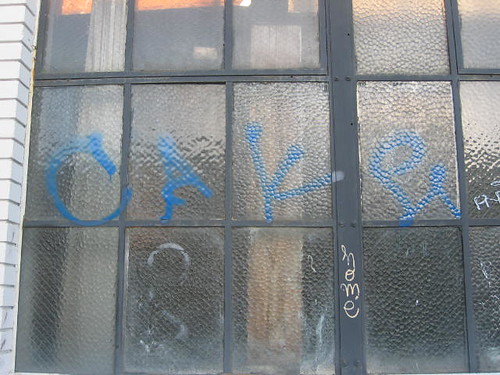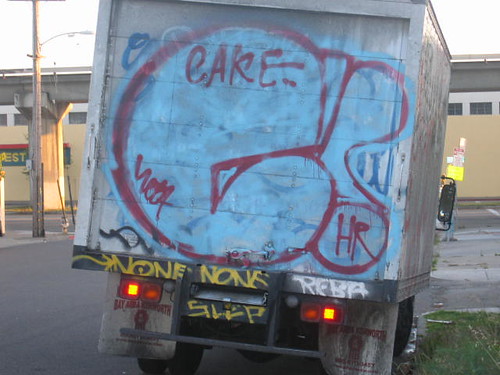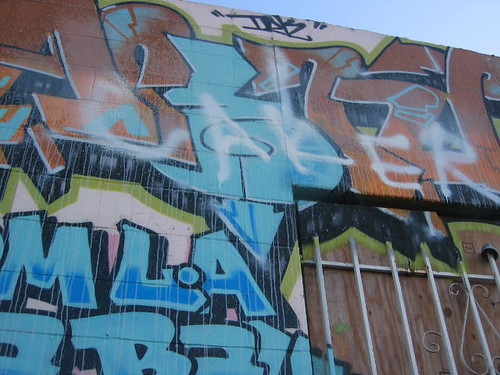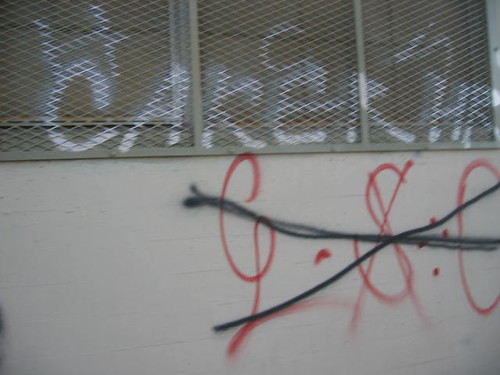(still computerless, bear with me)
Sometimes when I'm doing something, especially something new, a big questions clicks into place. Do you really know what you are doing? it asks me. Why are you doing it this way? Why this amount of X and no other? Why X and not Y? What variables are fixed?
For a long time I have had a gelatin hangup. I don't eat much meat and so I don't understand gelatin in its purest form. To me, it's one of the oddest substances around because it can still something. But I can't get past the mouthfeel of it and usually I don't loved the gelled component of a dessert even when I am trying to forget that it's there (it's difficult at work because I know what gets put where). I have made some mistakes at work--like BIGass mistakes--because I don't understand how the ingredient works and I have tried to read as many books as I can (at home, in the library). Yes, I've gone to McGee and I've gone to culinary textbooks, but what hit home for me the most were Lindsey Shere's remarks in the Chez Panisse Desserts book. This is what we find usually works best, she said, following with a list of ways you *should* treat gelatin-based products. In that sentence fragment, curled within a paragraph of explanation on blooming, temperature, and the like, was an admission of mystery. We do this even though we do not fully understand. I loved it. I called up a friend and read it to him.
Last night I encountered another big question while whisking together a souffle base that contained a couple ounces of flour. While waiting for it to come together my mind trailed over to the chocolate chiboust we make. The two are similar enough in preparation. Liquid is boiled and tempered with eggs, the result is cooked down on the stove to thick, cooled somewhat, and lightened by swiss meringue. In the chiboust, you must whisk heroically and over medium low heat while the souffle base is full speed ahead hot, whisk it good but, you know, there's no fire. In the chiboust, you are deathly afraid of the starch turning grainy. Because then you will have to make it again. And you know you don't want to spend another half hour whisking. In the souffle, this is no concern. Why?
WHY I asked my boss and as she started to explain something about the liquid ratio she was called away by the chef, so my question bobbed about like a balloon and my sous chef, mopping the floor, picked up about the liquid proportions. But that didn't work for me. There was so much more liquid in the chocolate. Then she tried a different tack. What is in the chocolate base? Milk. Butter. Fat. It's The Fat, she said. The Fat And The Flour. There's No Fat In The Souffle.
Ok, I can buy that. But why? I pressed her later. Why flour instead of cornstarch or tapioca? Can you use another starch? If you change the recipe to cream does it come out totally different? How do you know this? (which means of course how can I know this, or when will I know this)
They all know that I get hung up on the details. You can just accept it, my sous chef cautions, or you can figure out the science behind it. If you really want to know. Cause that's apparently where the explanation lies. But unless I understand it how will I know whether flour is best or another starch, whether I should use cream or a combination of butter + milk, milk + cream, if the yolks are too many or too few?
Pastry. Sometimes I feel like there should be a plaque in pastry kitchens that says Bang Head Here. But that's better than a timer that beeps You Motherfucker Answer Me!
Subscribe to:
Post Comments (Atom)
.jpg)

















1 comment:
hola. I am finally through the hell of the holidays. Actually it wasn't that bad. Mostly fun. Hope yours were as well! (Fun that is, not hell.) Let's get together soon! Next weekend = no bueno, but after that?
Post a Comment